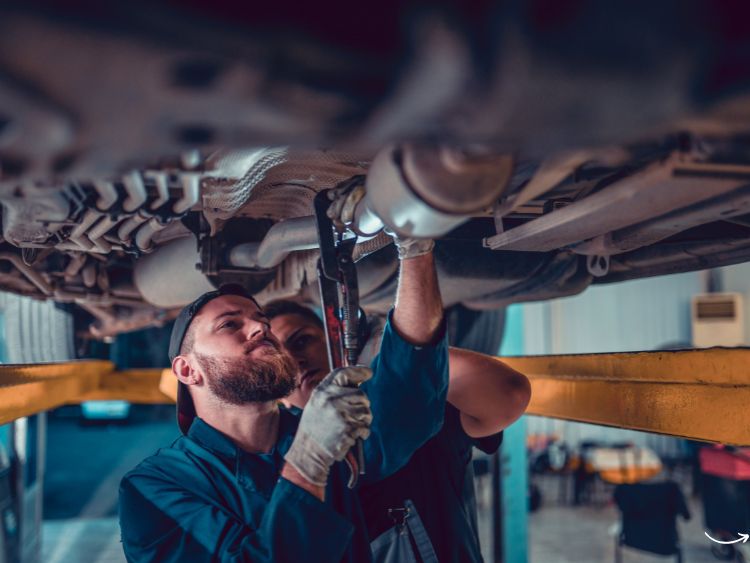In the realm of automotive Refinishing, the function of a primer for cars is usually understated, but it’s essential. When you’re working on repairing scratch marks, customizing your vehicle, or building an old automobile, primer acts as the unnoticed hero who lays the foundation for an impressive and long-lasting finish. In this post, we’ll go into the basics for automotive primer, its kinds applications, and the reason it’s a must-have component of painting.
What is Automotive Primer?
The automotive primer is a pre-treatment coating that is applied to the car’s surface prior to the application of final coats of paint. Its main function is to provide a uniform, smooth surface that aids in adhesion of paint and provides longevity for a long time. With no primer in place, the paint struggle to adhere properly to the surface. This can lead to problems such as cracks, peeling, as well as premature wear.
Primers are made to fill in small imperfections, protect the base material from corrosion and improve the aesthetics of the final painting. Primers are the connection between the material and paint which ensures that each layer that is applied to its fullest potential.
Types of Automotive Primer and Their Uses
There’s no universal automotive primer. The variety of primers available accommodates different requirements. Knowing the various primer types is essential to choosing the best one for your particular project.
Epoxy primer is an incredibly versatile option that gives outstanding adhesion and resistance to rust. It can be used on many materials, including fiberglass and metal, which makes it a preferred choice for numerous professionals. Since it is a the best resistance to corrosion, this product is frequently employed in restoration work or areas susceptible to water.
Urethane primer is admired due to its excellent build quality and the ease of sanding. This kind of primer is ideal to fill in tiny surface imperfections making a smooth canvas to paint. It’s often used in automobile body shops because of its fast-drying properties.
Self-etching primers contain acidic chemical that pierce through bare metal surfaces, which creates the bond is solid. This primer is great for metal surfaces that are raw but usually requires an additional topcoat or sealer prior to applying paint because it provides only minimal protection against corrosion.
High-build primers are the ideal choice for areas that require a little more leveling. The thick formula allows for greater filling of scratches holes, and uneven surfaces by providing a consistent foundation for painting.
How to Apply Automotive Primer Correctly
A proper applying of automotive primers is crucial for getting a professional-grade finish. The process starts with careful cleaning of the area including cleaning, sanding and getting rid of any contaminations like grease or corrosion. Clean surfaces will ensure that the primer is adhered to effectively and gives the best outcomes.
Before you spray, it’s important mixing the primer in accordance with the instructions of the manufacturer. Utilizing a reputable spray gun apply even, thin coats, and allow sufficient drying time between coats. The majority of primers require sanding following drying to remove any imperfections and prepare the surface for painting.
The temperature and humidity have a major impact on the performance of primers. Being in a controlled space can ensure uniform results and eliminates issues like uneven coverage or runs.
The Benefits of Using Automotive Primer
The benefits of using automotive primer extend far beyond the aesthetics. Through the creation of an adhesive to the painted surface and primer improves the endurance and longevity of the painting. It also serves as a protection against moisture, stopping corrosion and rust from developing as time passes. In addition, it reduces bleeding and creates the same color tone particularly when you use metallic or bright paints.
To create custom paint jobs and repairs permits seamless blending and decreases the possibility of obvious imperfections. The finished surface will appear professional even when under close inspection.
Choosing the Right Automotive Primer for Your Project
The selection of the best automotive primer requires consideration of factors such as the kind of surface, the finish you want, and the environment in which the vehicle will be exposed to. If, for instance, you’re trying to restore an old car that has significant rust damage then an epoxy primer that has outstanding corrosion resistance is perfect. However when you need to make minor repairs on the vehicle that has been well maintained the use of urethane primer could suffice.
A consultation with a professional, or consulting the recommendations of the manufacturer will help narrow down your possibilities. The purchase of a top-quality primer is an important step toward getting a painting job that can stand the years of wear and tear.
Closing Thoughts
In the field paint for automobiles, the primer is the unrecognized foundation on which durability and beauty are created. Inadequate or ineffective use of this process can result in unsatisfactory results, no matter the quality of paint used or the expertise that the artist. From preventing corrosion to providing an even and smooth appearance, automotive primer is an essential component of every professional or auto enthusiast’s arsenal.
If you know its different kinds, applications and techniques for application You can get stunning outcomes that will not only are beautiful but also last for a long time. When you tackle your next automotive painting project Don’t overlook the importance of primer. It’s the key to successful results.
Authoritative Links
- www.paint.org/primer-guide
- www.autobodytoolmart.com/primer-types
- www.duplicolor.com/automotive-primers
- www.3m.com/automotive-primers
- www.eastwood.com/primer-selection-guide

